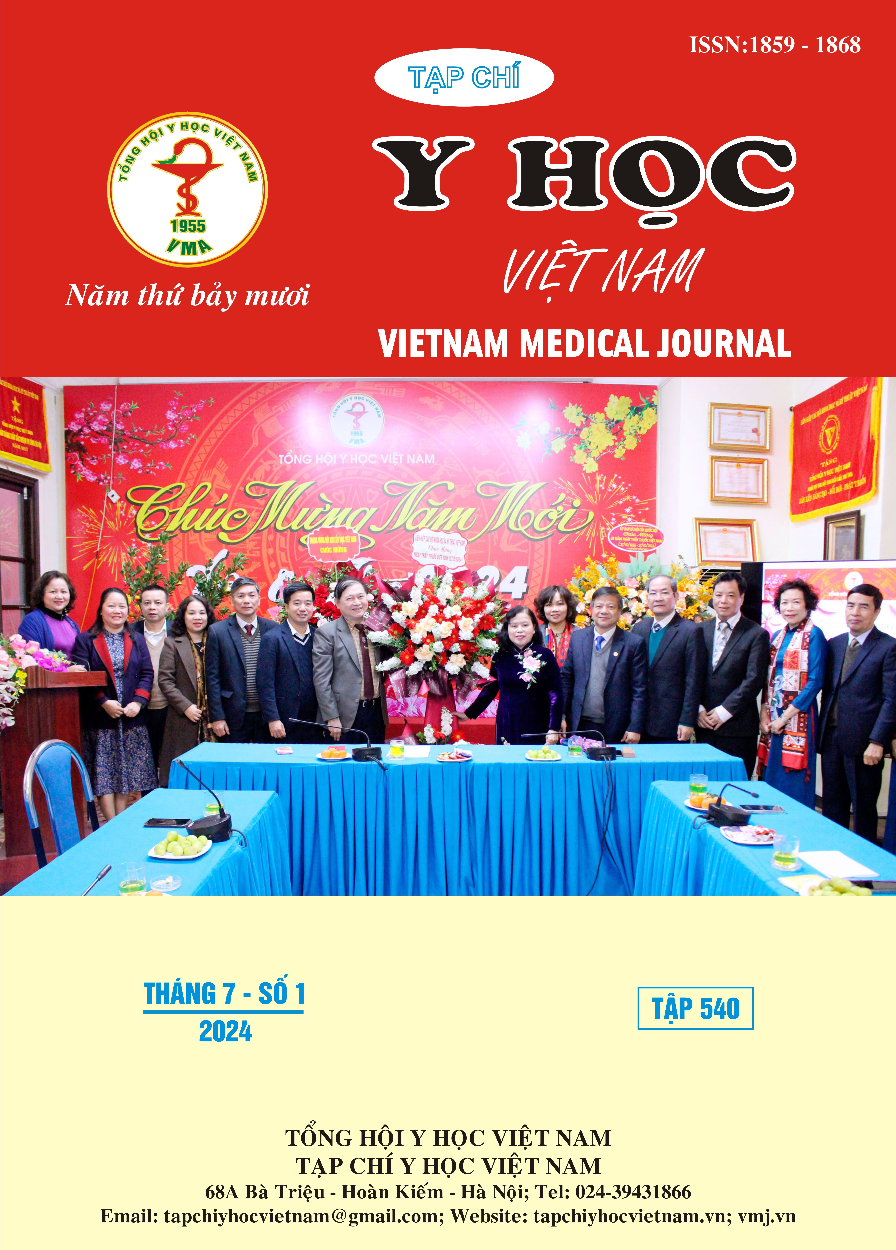PREDICTORS OF ACUTE KIDNEY INJURY AFTER SURGERY AT NGHE AN GENERAL HOSPITAL
Main Article Content
Abstract
Objectives: to recognize the risk factors for acute kidney injury after surgery at Nghe An General Hospital. Subjects and methods: An analysis observational study on 138 patients treated at Department of Surgical Intensive Care, Nghe An General Hospital from April 2023 to March 2024. Results: Risk factors for postoperative AKI included many underlying diseases (OR = 2.3), gastrointestinal surgery (OR = 2.5), thoracic surgery (OR = 3.1), shock before or during surgery (OR = 5.0 and 2.9), amount of fluid given to the patient before surgery, p < 0.05. SOFA and APACHE II scores on admission in the group requiring continuous hemodialysis were higher than those in the group without dialysis. Preoperative and intraoperative fluid infusion in the group requiring continuous dialysis were 1.3 ± 0.3 (liters) and 1.8 ± 0.4 (liters), respectively, significantly higher than those in the group without dialysis, with p < 0.05. The rate of shock before and during surgery was also a risk factor for increasing the rate of continuous dialysis in patients with AKI after surgery. High SOFA score and low urine output were two main risk factors for postoperative AKI when conducting multivariate regression testing. Conclusion: Underlying diseases, thoracic and gastrointestinal surgery, and large amounts of positive-balance fluids during surgery were risk factors for postoperative AKI. SOFA, APACHE II scores, and positive-balance fluid volume before and during surgery were predictors for post-operative AKI patients requiring extracorporeal dialysis.
Article Details
Keywords
Acute kidney injury (AKI), after surgery, predictors
References
2. Khwaja A. (2012). KDIGO clinical practice guidelines for acute kidney injury. Nephron Clin Pract, 120(4), c179-184.
3. Bell S. và Prowle J. (2019). Postoperative AKI—Prevention Is Better than Cure?. JASN, 30(1), 4–6.
4. Hahn R.G. (2010). Volume kinetics for infusion fluids. Anesthesiology, 113(2), 470–481.
5. Grams M.E., Sang Y., Coresh J. và cộng sự (2016). Acute Kidney Injury After Major Surgery: A Retrospective Analysis of Veterans Health Administration Data. Am J Kidney Dis, 67(6), 872–880.
6. Nguyễn Trường Sơn (2016). Khảo sát tình hình tổn thương thận cấp ở bệnh nhân điều trị tại khoa hồi sức bệnh viện Chợ Rẫy. Luận văn chuyên khoa II. Khoa Y – Đại học Quốc Gia TP HCM.
7. Hà Hoàng Kiệm (2023). Lọc máu điều trị thay thế thận. Bệnh thận tiết niệu, Nhà xuất bản Y Học, tr. 115.
8. Lê Thị Diễm Tuyết (2010). Nghiên cứu đặc điểm lâm sàng, cận lâm sàng và điều trị suy thận cấp tại khoa Điều trị tích cực Bệnh viện Bạch Mai. Luận văn Tiến sĩ. Trường Đại học Y Hà Nội.
9. Nguyễn Thế Anh, Tô Hoàng Dương (2021). Đánh giá thực trạng tổn thương thận cấp theo thang điểm RIFLE ở bệnh nhân điều trị tại khoa hồi sức tích cực và chống độc. Tạp chí Y học Việt Nam; 508(1).
10. Quách Hoàng Giang (2021). Yếu tố nguy cơ tổn thương thận cấp sau phẫu thuật tại khoa hồi sức cấp cứu. Luận văn chuyên khoa cấp II. Trường Đại học Y dược TP HCM.


